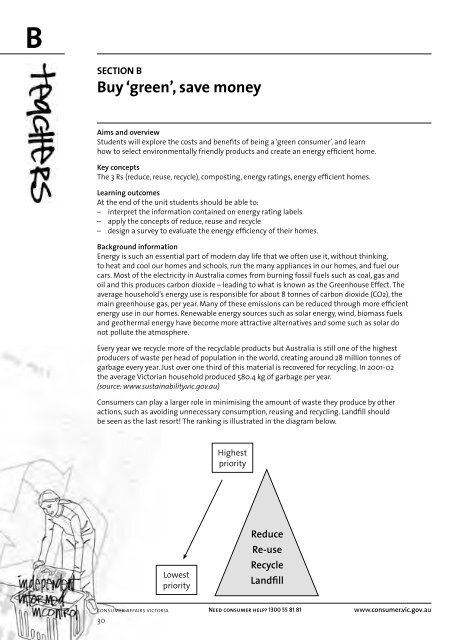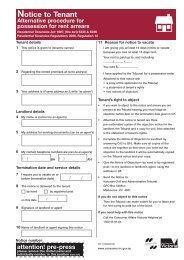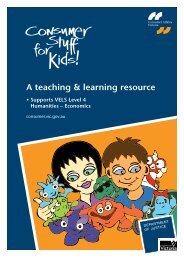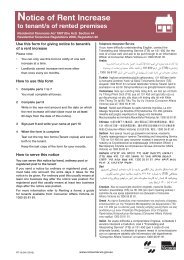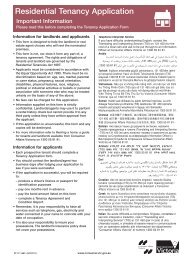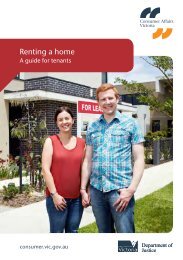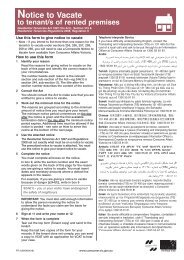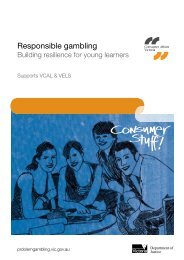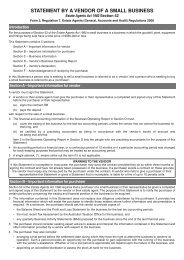A resource for teaching and learning about consuming planet earth
A resource for teaching and learning about consuming planet earth
A resource for teaching and learning about consuming planet earth
Create successful ePaper yourself
Turn your PDF publications into a flip-book with our unique Google optimized e-Paper software.
B<br />
SECTION B<br />
Buy ‘green’, save money<br />
Aims <strong>and</strong> overview<br />
Students will explore the costs <strong>and</strong> benefits of being a ‘green consumer’, <strong>and</strong> learn<br />
how to select environmentally friendly products <strong>and</strong> create an energy efficient home.<br />
Key concepts<br />
The 3 Rs (reduce, reuse, recycle), composting, energy ratings, energy efficient homes.<br />
Learning outcomes<br />
At the end of the unit students should be able to:<br />
– interpret the in<strong>for</strong>mation contained on energy rating labels<br />
– apply the concepts of reduce, reuse <strong>and</strong> recycle<br />
– design a survey to evaluate the energy efficiency of their homes.<br />
Background in<strong>for</strong>mation<br />
Energy is such an essential part of modern day life that we often use it, without thinking,<br />
to heat <strong>and</strong> cool our homes <strong>and</strong> schools, run the many appliances in our homes, <strong>and</strong> fuel our<br />
cars. Most of the electricity in Australia comes from burning fossil fuels such as coal, gas <strong>and</strong><br />
oil <strong>and</strong> this produces carbon dioxide – leading to what is known as the Greenhouse Effect. The<br />
average household’s energy use is responsible <strong>for</strong> <strong>about</strong> 8 tonnes of carbon dioxide (CO2), the<br />
main greenhouse gas, per year. Many of these emissions can be reduced through more efficient<br />
energy use in our homes. Renewable energy sources such as solar energy, wind, biomass fuels<br />
<strong>and</strong> geothermal energy have become more attractive alternatives <strong>and</strong> some such as solar do<br />
not pollute the atmosphere.<br />
Every year we recycle more of the recyclable products but Australia is still one of the highest<br />
producers of waste per head of population in the world, creating around 28 million tonnes of<br />
garbage every year. Just over one third of this material is recovered <strong>for</strong> recycling. In 2001-02<br />
the average Victorian household produced 580.4 kg of garbage per year.<br />
(source: www.sustainability.vic.gov.au)<br />
Consumers can play a larger role in minimising the amount of waste they produce by other<br />
actions, such as avoiding unnecessary consumption, reusing <strong>and</strong> recycling. L<strong>and</strong>fill should<br />
be seen as the last resort! The ranking is illustrated in the diagram below.<br />
consumer affairs victoria<br />
30<br />
Lowest<br />
priority<br />
Highest<br />
priority<br />
Reduce<br />
Re-use<br />
Recycle<br />
L<strong>and</strong>fill<br />
Need consumer help? 1300 55 81 81 www.consumer.vic.gov.au


